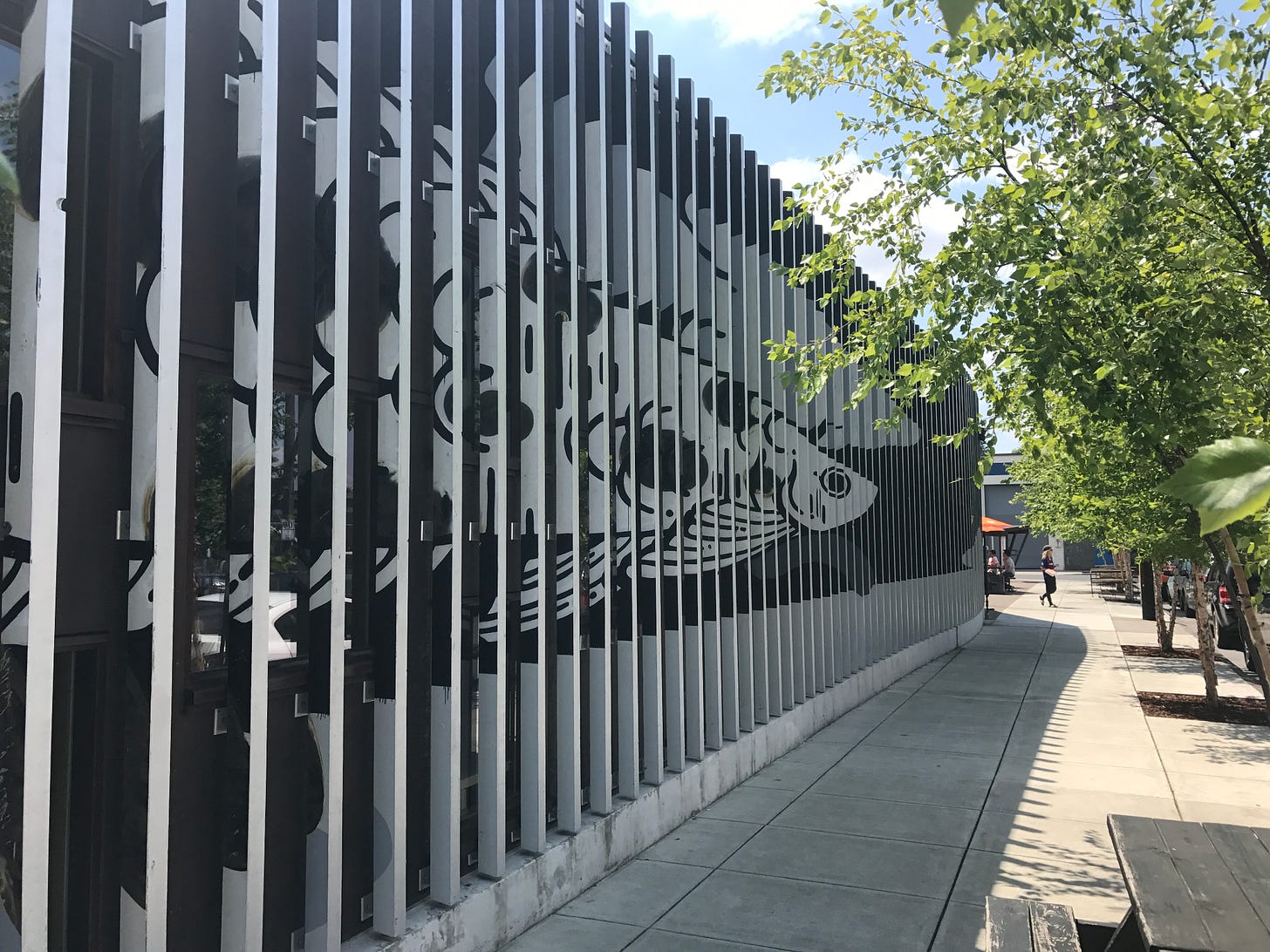Fragments matter: they are meaningful with or without context. They are innately significant, attaining the universal. This despite being loosened or separated from what had framed them. Or do they resonate because of that separation, having no need for context in order to have meaning?
Fragmentation is aspirational – and always reaching for what is beyond, as writer Sarah Haas expresses it: “How brave it can be to allow the fortitude of every presence to suggest the limitlessness of absence, to write in pursuit of the endlessly recessive real.”
Haas presents the concept of “absence allowed, a kind of presence ...”
For their liminal quality, negative space and margins are the soulmates of fragments, defining the edges and elements of the whole, present and critical. They are parts of the sum – out of central view yet discernible.
The concept of fragments – pieces with meaning – transcends media. Fragments are found in modern music, ancient archaeology, and early technology. A fragment can be an ancient bone thrusting out of the dust or the audio file of one musician sampled by another.
In the music of Neil Young is a musical manifestation of that inverse cousin to fragmentation, negative space. Someone other than me observed years ago that the wonder of listening to Young’s guitar work is not in the notes but what happens between the notes. Young’s music makes you listen to the inter-spaces, in anticipation of the ones coming next, but what comes next might or might not be connected to what preceded or what follows. In a single line from Young’s “Deep Forbidden Lake” rests the sense of fragments, edges, gaps and suspended particles: as its lyrics state, “passing by the way between here and left behind.”
The fragmentary quality of his music is the way it feels like tuned, electrified crushed glass. You hear these qualities in the extended solo on “Like A Hurricane” -- it’s a prime example of how the drama is in the gaps and spaces. I’ve listened a hundred times to the interspersed solos of the song, the phrases alternating between lurching and slicing, the notes seemingly suspended in one second and flying forward in the next like a choreographed arc weld.
The song starts suddenly – mid-chords – like you came late into a conversation. The abruptness suggests a fragment of music that existed in the studio but was not recorded, in that moment. And that is essentially what happened: in Young’s biography “Shakey,” Jimmy McDonough writes: “… if you listen to the take on the record, there’s no beginning, no count-off, it just goes woom!”
It happened when the guys in the booth thought the rehearsal was over, McDonough reports, but reflexively turned on the machines when they heard the musicians playing again.
“Neil goes, ‘yeah, I think that’s how it goes.’ Just like that. And that was the take. That’s the only time we ever played it that way.”
A recording machine turned on mid-phrase, a conversation interrupted, static in a phone call: all are forms of fragments – and perhaps neither heard nor preserved. Pieces separated from the body of something. I believe that bars of unrecorded pre-”Hurricane” notes are hanging somewhere.
Permanent in the ether: a phrase that suggests the tangible mercurialness of fragmentation.
Spaces and empty spots, leftovers and remainders.
“No story is a straight line,” wrote Pat Conroy in Beach Music. “The geometry of a human life is too imperfect and complex, too distracted by time and the bewildering intricacies of fate to admit the line into its system of laws.”
How does fragmentation function?
Just as the mystery in a Neil Young solo is what happens between the notes, sometimes a surface has untold tales. The colorful stalks of a shrub are as bright and beautiful as the autumn leaves that turned color, faded and fell. After the streets and cars had dried from a recent rain I was walking by a white panel van and I could read the name of what it used to be: the decal letters were long-gone but the clear adhesive remained.
Fragments are revealed – invisible ones, at that. What’s missing sometimes shows you what’s there. One thing in a life has a connection to another thing.
Links happen and they may be connected by a thin, serpentine or even invisible wire, but this may be what defines fate: no flat mirror or broad surface to hold or reveal what comes to pass, but tendrils that challenge us to bring emotion and experience together in order to make sense of the whole unwieldy contraption we call life.
-- N.R.



Love the Neil Young story!
You have a great way with words and a way of making me think.
“Fragments are revealed – invisible ones, at that. What’s missing sometimes shows you what’s there. One thing in a life has a connection to another thing.”
Thanks for the connections.